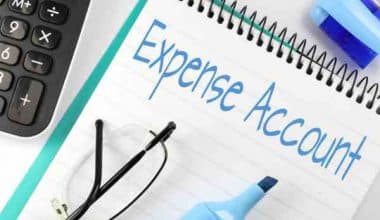Bookkeeping is likely giving you sleepless nights if you’re thinking of launching a business or trying to secure funding for your endeavor. That’s the bad news; the good news is that it’s definitely worthwhile. Keeping tabs on and reporting a company’s financial health does more than keep you in the know about its fiscal performance; it also may help entice investors and purchasers. A profit and loss (P&L) statement is among the most crucial records you may keep for monitoring the health of your company. Among the many financial statements that companies generate, the profit and loss statement (P&L) is among the most important. Having complete faith in theories and methods will only get you so far. On the other hand, achieving sustainable growth requires first seeing the results of your efforts on the bottom line. The P and L management, example, and template will be discussed in this piece.
What is P and L Statement?
A P and L statement, which is also called an income statement, is a financial report that sums up a company’s income, expenses, and revenue for a certain time period. A company’s capacity to produce sales, control costs, and turn a profit is shown in its profit and loss statement. This report is different from the cash flow statement because accounting ideas like revenue recognition, matching, and accruals are used to put it together.
Naturally, a profitable business is one with increased revenue. If it is less than operating costs, the company may be losing money.
The profit and loss statement is a useful tool for monitoring the state of your company’s finances since it can highlight areas for improvement and help you spot any potentially dangerous trends.
Types of P and L Statement
There are 2 methods for compiling a P and L statement. Both the cash and accrual methods have their advantages and disadvantages.
#1. Accrual Method
The accrual method of accounting recognizes earnings as they occur. This means that a business that uses accrual accounting also takes into account future cash inflows. Even if the company has not yet been paid for the goods or services it has delivered, it will nevertheless report the revenue on its profit and loss statement. However, liabilities are recorded even if the corporation hasn’t yet forked over any cash to cover them.
#2. Cash Method
The cash technique, often known as the cash accounting method, is utilized just when actual cash is being moved into and out of the business. This is a very basic system that just records money coming in and money going out. When cash is received by a company, it is recorded as revenue, and when cash is used to pay bills or other liabilities, that is recorded as a liability. Furthermore, this approach is widely employed by both smaller businesses and individuals for financial management purposes.
How Do You Write a P&L Statement?
How frequently you generate a profit and loss statement is completely up to your discretion. While some prefer to do so quarterly, other businesses choose to compile their profit and loss accounts on a monthly basis.
Using accounting software, which will take care of the entire process for you and provide you with a profit and loss statement once it is complete, is the most efficient approach to making a profit and loss statement. This is true regardless of your personal preferences. If you do not already have accounting software, you can still generate a P and L statement by using a template instead. Here are the steps to take to write a P and L statement.
#1. Calculate Revenue
Gathering your company’s total revenue is the first stage in making a profit and loss statement. Balances for open accounts, such as cash and accounts receivable, can be retrieved from the general ledger.
When compiling a profit and loss statement for a certain time period, such as a month, you will include any revenue earned during that time, regardless of whether or not it has been collected. If you’re compiling a quarterly report, you can simply sum up the money you made over the course of the three months covered by the report.
Every money made should be factored into the revenue total, whether it was earned by selling a product or service or by selling an unused printer to a neighboring company.
#2. Calculate the Cost of Goods Sold
A crucial component of any statement of financial performance is the cost of goods sold. The wholesale price of wallets must be factored into your sales price if you plan to make a profit.
The wallets’ production materials and supplies should be included if you’re making them yourself. However, the time you or your employees put in to perform the service must be factored into the price you charge for the service.
#3. Expenses
The Expenses on a profit and loss statement for a small firm can include anything expenditures on running the company. Some of these are
- Borrowing Costs
- Supplies for the workplace
- Wages, pensions, and other employee benefits, plus payroll taxes
- Promotional Expenses
- Costs incurred by the company and remitted to suppliers or service providers
- The costs of hiring a professional, such as an accountant and attorneys
Depreciation of assets is a topic fundamental to the bookkeeping of many costs. Capitalizing some purchases as assets and deducting their cost over their useful lifetime is necessary for things like office equipment. If you buy a $1,000 computer, for instance, and don’t claim an immediate tax deduction for it, you’ll have to spread the cost out over five years. The expense for the computer, at $200 per year, represents 20% of the initial outlay on the income statement.
Expenses that aren’t directly related to running a business, such as interest, and taxes, are commonly shown in a distinct category when used as an example of how a business operates.
#4. Gross Profit
The difference between the total revenue or gross revenues and the cost of the goods sold is the gross profit for the business. If the company focuses on providing services rather than selling physical goods, then the quantity of their gross profit and gross receipts will be the same.
#5. Net profit or loss
After determining any taxes that are due and deducting those amounts from pretax income, the remaining amount will equal the profit or loss that a company had during the period in question. It is common practice to equate a company’s net profit or loss to its earnings before interest, taxes, depreciation, and amortization when attempting to compare businesses operating in distinct markets and under distinct tax regimes or when accurate statistics are not yet readily available (EBITDA).
What Is the Main Purpose of Making a P and L Statement?
A profit and loss statement is an accounting document that details the income and expenses of a company over a given period. As the name suggests, it also details whether or not you turned a profit throughout that time frame. Some other names for a profit-and-loss statement include P&L and income statement. Also, read INCOME STATEMENT: Formats, Examples, and How To Prepare One.
P&L Management
It’s essential to have more money coming in than going out if you want to keep your business going. When a small firm incurs too many expenses, it can quickly spiral into debt and possibly fail.
The management of a company’s profit and loss is referred to as “profit and loss (P and L) management.” Profit and loss (P and L) management entails making efforts to increase revenue while decreasing costs. The health and management of your organization can be gauged by examining the most recent P and L account statement.
However, insight into what areas of your business need improvement can be gleaned from analyzing your profit and loss statement. Keeping tabs on your company’s P&L will help you identify areas where you may save money and identify opportunities to boost revenue. Your ability to handle profit and loss (P&L) duties is a skill you must acquire. To get you started, here are some ideas:
#1. Create Profit and Loss Statements
Initially, it is necessary to draft financial statements. Depending on their needs, business owners may do this once a week, month, quarter, or year.
Your earnings and expenditures are detailed in the report. Income and costs are clearly laid forth in the profit and loss statement. In this way, you will always know exactly how much money you have and where it has gone.
Putting together a profit and loss (P and L) statement can help you assess your company’s financial health and make informed decisions. Also, financial statements are also used by investors and lenders to help them decide whether or not to provide funding.
#2. Analyze Profit and Loss Statements
The income statement will allow you to compare financial performance across accounting periods.
To see if your company is improving, staying the same, or falling, look at its profit and loss statement from the past few years and compare it to the most recent one. A decision can be reached after carefully examining your declarations.
Perhaps you discontinued a best-seller in favor of a different offering. If you do market research and look at your profit and loss records from the past and the present, you may decide to reintroduce the product.
Your profit and loss (P and L) statement can be compared to that of a rival company. This method is useful for pinpointing issues within one’s own company. You may learn where the competition invests and where they cut costs by analyzing their profit and loss statements.
#3. Adapt Your Company’s Budget to New Circumstances
The key to successful profit-and-loss management is adapting your financial strategy as conditions change. Problems in financial well-being become apparent when profit and loss figures are compiled and compared. When you’re aware of these issues, you can devise a fresh plan for expanding your small business.
Business owners can save money by carefully monitoring their profit and loss statements. After you know how much money you’re spending, you may start looking for better prices from other providers.
Your bank balance may be dangerously low at times. It’s possible to attract customers who won’t pay if you offer them credit. It means less money pouring into your company than you would like. The time it takes for customers to pay your invoices is something that may be negotiated.
Increasing sales is an essential part of managing profits and losses. To attract customers, you could use smart pricing (such as discounts).
#4. Consult a Financial Expert
Profit and loss management are tasks that can be handled internally, but it couldn’t hurt to consult an accountant. Your accountant should be consulted for advice on managing your P&L and making important business decisions.
If your company is losing money, an accountant can advise you on how to cut costs and better manage your finances.
How Do You Analyze a P and L Statement?
The numbers might make many people feel uncomfortable, but with a few simple pointers on what to look for and why, you can quickly become an expert at interpreting financial records. Let’s take a look at this practical P and L statement example:
| Sales | April | May | June |
| Lemonade | 312 | 396 | 474 |
| Chips | 104 | 130 | 156 |
| Total Sales | 416 | 526 | 630 |
| Cost of Goods Sold | |||
| Lemons | 75 | 75 | 100 |
| Sugar | 10.58 | 10.58 | 10.58 |
| Cups | 40 | 40 | 40 |
| Ice | 5.37 | 7.16 | 8.95 |
| Chips | 58.98 | 58.47 | 58.47 |
| Total COGS | 169.93 | 191.21 | 218 |
| GROSS PROFIT | 246.07 | 334.79 | 412 |
| SGBA Expenses | |||
| Book-keeping | 20 | 20 | 20 |
| Advertising | 10 | 60 | 40 |
| TOTAL SGBA EXPENSES | 30 | 80 | 60 |
| NET INCOME | 216.07 | 254.79 | 352 |
| Profit Margin Calculated | 51.94% | 48.44% | 55.87% |
The following are some of the more straightforward aspects of your P&L statement to examine:
#1. Sales
Reviewing sales is a natural starting point because increasing sales is the most effective approach to boosting profits. If you see a particularly successful month, think about what you accomplished that month and how you can replicate that success in the future.
From this data, we may conclude that June was the most successful month overall, with the highest sales, gross profit, net income, and profit margin. After looking at the bigger picture, we may conclude that this could have happened because of seasonality or because of more aggressive advertising.
#2. Income and Product Sales Sources
The sources of your money are another important consideration in relation to sales.
Evaluate each revenue stream to ensure it contributes to the growth of your organization rather than taking away from its bottom line. Is it true that some of them require an excessive amount of effort for a negligible return? One possible scenario involves making money by selling lemonade and snacks. Neither is currently hurting the company, but if the chips weren’t moving, they might as well be scrapped and replaced with something that is.
#3. Seasonal Variation
To put it simply, seasonality refers to the fact that certain phenomena fluctuate with the passage of time. This is visible across the board, from sales to spending and beyond.
As seen by the lemonade stand, sales are subject to the seasons. Sales tend to increase as summer approaches and temperatures rise. The lack of seasonality in this example’s expenses can be explained by the fact that lemon prices rise in the summer due to increased demand and decreased supply. Because of higher supply and lesser demand, the price of lemons typically drops throughout the fourth quarter and winter.
#4. Cost of Goods Sold
Your next step should be to analyze your total cost of goods sold. If your income increases, it stands to reason that your cost of goods sold will also increase, seeing as how these costs are directly associated with your product. The opposite scenario would be absurd and raises a warning flag for further investigation.
When you look over the cost of products sold, you should also ask yourself questions such as, “Is there a method by which I can lower these expenses?” Finding new ways to reduce your cost of goods sold can lead to an increase in both your bottom line and profit margin.
In the above example, the proprietor of the firm may want to think about making bulk purchases of consumables that do not expire, such as chips, cups, and sugar, in order to lower their costs throughout the year and raise their annual profit margin.
#5. Net Income
One of the most crucial aspects of a successful and long-lasting firm is its net income or profit.
In most situations, you’ll want your profit to be in the black. There are times when a loss is acceptable, such as when a corporation makes an investment now to save money or boost sales later.
The proprietor of our fictitious lemonade stand might have saved money by stocking up on supplies like chips, sugar, and cups in April and using them throughout the year. It’s possible that doing this would cause a loss for the company this month, but the savings and increased profits would more than makeup for it by the end of the year.
What Are the Benefits of a Profit and Loss Statement?
The company’s ability to make money and stay in business can be seen in its statement of earnings. But it is a required statement that is important for every business and needs to be put together carefully so as not to put the company’s future in serious danger. This P and L statement is required in the management of every firm and is important for every business. Below, we will talk about the importance of the profit and loss (P and L) statement in the management of every business and as well as the advantages it offers.
- It’s useful in figuring out how profitable the company is and what it costs to keep running.
- The P&L statement can be helpful for both shareholders and potential investors in determining the profitability of a company’s stock.
- The financial statements can be drafted, audited, and approved at the annual meeting, helping the company comply with legal requirements.
- Examining a company’s profitability and comparing it to its performance in the past is the direct purpose of a profit and loss statement.
- A high operating cost, as shown by a negative net profit despite a positive gross margin, can prompt top-level management to make adjustments.
- Better company decisions can be made with this information as the foundation for future profit and loss statements.
P and L Statement Template
Obviously, it’s important for a business owner to know that they’ve made a profit. Quickly calculate your business’s net profit with FreshBooks’ premade profit and loss (P and L) statement template. You can take charge of a company’s financial record by using the available accounting report template, such as the Profit and Loss (P and L) Statement. Here are a few tips on how to create a P and L statement template.
- Choose your time frame: You get to decide how long of a time frame was utilized to compile the income statement. It might be a month, a quarter, or a year.
- Sum up your revenue and expenditures: Please enter your company’s income and expenses.
- Make edits to the list as needed: Adjust the P&L statement as needed by adding or removing lines of data to reflect the needs of your company. Lines can be added or removed from the template with ease, depending on your needs.
- Verify the calculations twice: Verify that the calculations hold true.
What is P&L vs Income Statement?
If you own a business, you should keep track of how much money you make and lose by preparing a profit and loss statement. In this context, “profit and loss” and “income statement” mean the same thing. A P&L is shorthand for a profit and loss statement.
Conclusion
A revenue, cost, and expense (P&L) statement shows how well a company did financially over a certain amount of time. Every three months and once a year, public companies have to put out three financial statements: an income statement, a balance sheet, and a cash flow statement. An income statement is one of those statements. Also, investors and analysts use financial statements to evaluate a company’s current and prospective future growth based on its financial health.
FAQs
Who prepares a P&L statement?
Directors are responsible for preparing income reports, while audit committees are responsible for monitoring the accuracy of financial information.
What does the profit and loss statement show?
The profit and loss statement serves as an essential tool for business owners and accountants. Expenses and income are broken down in the report to reveal a final profit or loss. Furthermore, it specifies the extent to which a company can control its profitability by lowering expenses and increasing sales.
Similar Articles
- FINANCIAL STATEMENT OF A COMPANY: Best 2022 Samples & Templates to Learn From.
- HOW TO GET A BANK STATEMENT FROM YOUR BANK
- WHAT IS AN INCOME TAX: Definition, Rate, and Types
- WHAT HAPPENS IF A CHECK BOUNCES? (Detailed Guide)






